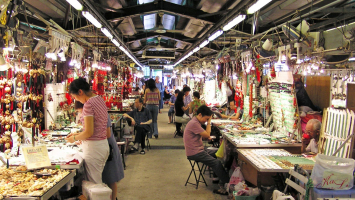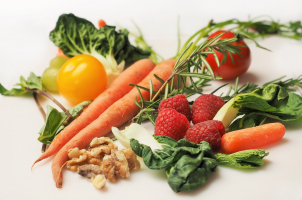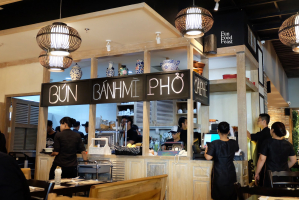Top 10 Best Street Food in Hong Kong
Hong Kong street food is not just a meal, it's an experience. Every bite tells a story of tradition and innovation. This article explores the vibrant world of ... read more...Hong Kong's street food scene and its iconic dishes.
-
Topping the list of Hong Kong's beloved street foods is the Egg Waffle. Imagine a snack that looks like a bunch of golden bubbles joined together. That's the Egg Waffle. People love it for its unique shape and yummy taste. Long ago, a clever cook used broken eggs so they wouldn't go to waste. They mixed the eggs with some flour and sugar. Then they cooked it in a hot pan with round pockets. That's how Egg Waffles started.
Making them is easy but you have to be careful. You pour a sweet batter into a special pan. Then you cook it until the outside is nice and crispy. But the inside? It stays soft and fluffy. This way of making them has stayed the same for a long time. But now, some cooks add new fun things like chocolate or fruit to the mix.
When you bite into an Egg Waffle, it's crunchy at first. Then it melts in your mouth. It's mostly sweet and a little bit like vanilla. Everyone likes them, from people who live in Hong Kong to visitors.
In different parts of Hong Kong, they make Egg Waffles in different ways. Some add green matcha tea or chocolate flavor. But you can still find the simple, old-style ones too. You can smell them cooking in busy places and hidden corners. The smell makes you want to try one right away.
If you've never had an Egg Waffle, there are many places in Hong Kong to find them. Some shops have been making them for a very long time. These are good places to try your first Egg Waffle. But there are also new places trying new ideas that are popular too.Key Takeaways:
- Origin: A creative solution to avoid wasting broken eggs in Hong Kong.
- Flavor Profile: Sweet, with a crispy exterior and soft interior.
- Ingredients: Primarily eggs, flour, and sugar. Some variations include matcha, chocolate, or fruit fillings.
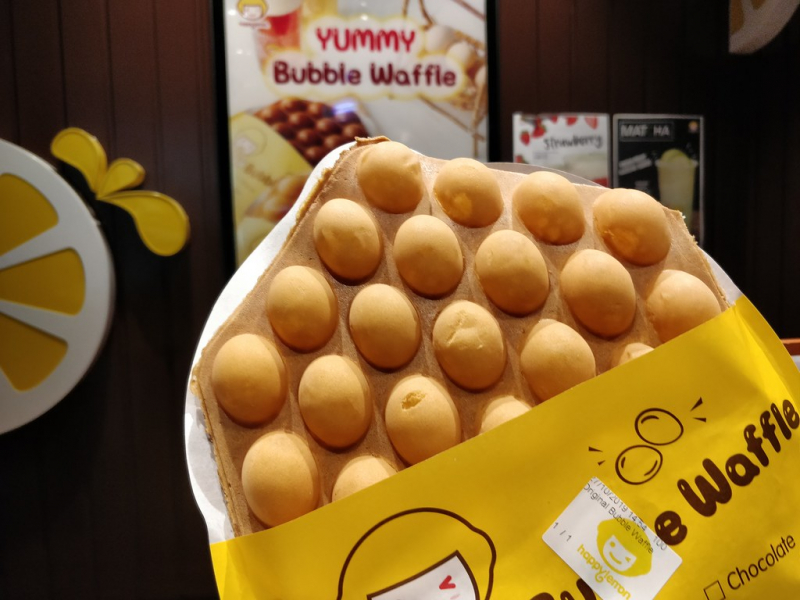
Photo by Alpha on Flickr https://www.flickr.com/photos/avlxyz/48967552222 Video by ANYDOKO -
Now, let's chat about Curry Fish Balls. Picture bouncy little balls made from fish. They're fun to eat and packed with flavor. They came about when smart folks decided to mix extra fish bits with flour. Then they shaped them into balls and cooked them. But the best part? It's the curry sauce because it's spicy and smells amazing.
Here's how they make Curry Fish Balls special. They boil them first. Then they let them soak in a hot curry sauce. This sauce is full of spices that soak right into the fish balls. Each one is like a spicy surprise in your mouth. They're a bit chewy and people just love them.
When you take a bite, you'll feel a crunch. Inside, they're soft and full of fish flavor. Then the spicy curry hits you. It's a bunch of spices that dance on your tongue. They're spicy, tangy, and just so good.
You'll find Curry Fish Balls everywhere in Hong Kong. Some are just like the old days – simple and spicy. But there are new kinds too. Some have extra spices, some have a thicker or thinner sauce. But they all have that great curry taste.
If you're in Hong Kong and want to try these spicy snacks, you're in luck. You'll find them in old neighborhoods and new spots too. Just follow the smell of curry. It'll lead you right to a stall where they serve up this hot, spicy treat.Key Takeaways:
- Origin: Developed as a way to use excess fish meat, later elevated with curry.
- Flavor Profile: Mild fish balls complemented by a spicy, aromatic curry sauce.
- Ingredients: Fish meat, flour for the balls; a blend of spices for the curry sauce.
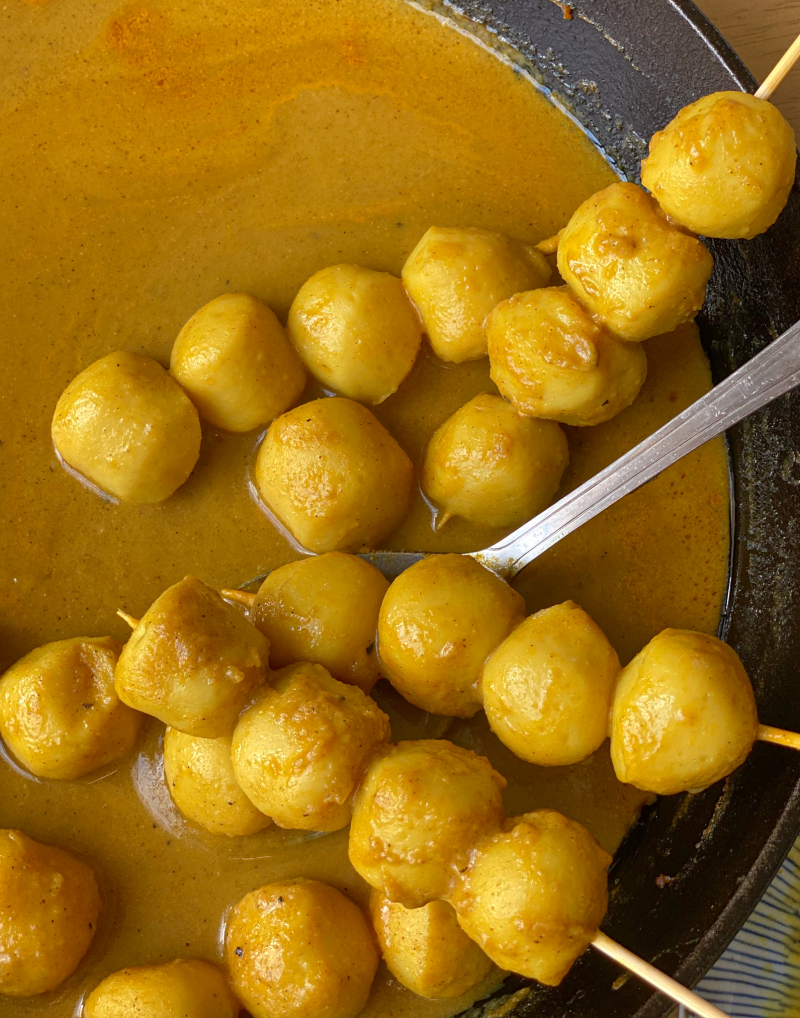
Screenshot of https://cookwithdana.com/hong-kong-curry-fish-balls/ Video by HongKong Food -
Stinky Tofu, or 臭豆腐, ranks high on the list of Hong Kong’s must-try street foods. Its name might make some people think twice, but for many, it's a favorite. It's got a smell that turns heads. But locals love it, and travelers get curious.
This tofu is not like others. It goes through a special process called fermentation. That's what gives it the strong smell. To make it, they put fresh tofu into a special liquid. This liquid has milk that's gone sour, veggies, and sometimes meat. The tofu sits in there for a few days. It soaks up all the tastes and smells.
Next, they fry it until it's crispy and golden. The outside gets crunchy, but the inside? It stays soft and full of flavor. The smell might be strong, but the taste is not. It's softer. This makes Stinky Tofu a food full of surprises.
People often ask, why do folks like it so much? Well, it starts with that crunch. Then you get the soft middle. The flavor is rich and deep. It's got something called umami, which is a tasty, savory flavor. It's a food that brings a whole adventure to your mouth.
In Hong Kong, Stinky Tofu comes in different styles. Some places fry it. Others steam it or let it simmer in a pot. And they serve it with different sauces. Some are spicy, some are more mild. These sauces make the tofu taste even better.
If you walk around Hong Kong, you'll find Stinky Tofu in many places. In old parts of the city, you'll see vendors who have been making it the same way for a long time. In newer spots, they might add things like crispy garlic or a special sauce from that stall.
So, if you're ready to try something new, just follow your nose. You'll find Stinky Tofu by its smell. It's in busy markets and quiet streets. When you try it, you'll see why so many people are fans of this one-of-a-kind treat.Key Takeaways:
- Origin: A cherished snack from mainland China.
- Flavor Profile: Crunchy on the outside, soft inside, with an earthy and umami taste.
- Ingredients: Fermented tofu, often accompanied by sauces or toppings in various renditions.
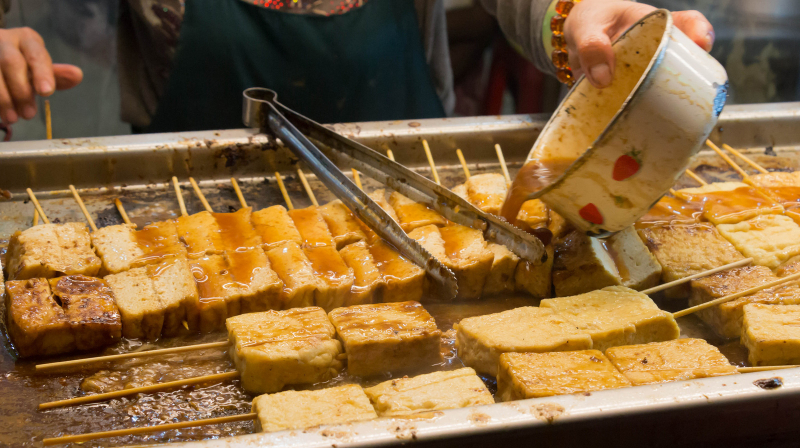
Screenshot of https://www.tastingtable.com/1151556/the-legendary-origins-of-stinky-tofu/ Video by Explore_HongKong -
Tofu Pudding, or Dou Fu Hua, is a real favorite in Hong Kong. It's a dessert that's soft like silk and loved by many. You'll see people enjoying it all year round. It's just as good in the summer sun as it is on a cold winter's evening.
To make it, you begin with soybeans. They get soaked in water and then ground up to make soy milk. Then, they add something to the milk to make it change into a soft dessert. It's like watching a magic trick. The soy milk turns into something new and exciting – a wobbly, smooth pudding.
When you get a bowl of Tofu Pudding, it looks a bit like a creamy custard. It's so soft that you need to be gentle when you use your spoon. The pudding itself doesn't have a strong taste. That's why they add sweet things on top. Some like it with a ginger syrup that's both sweet and a little spicy. Others might add sweet beans or pieces of fruit.
What's cool about Tofu Pudding is how it can be eaten cold or warm. On a hot day, a chilled bowl is perfect. But when it's cooler out, a warm bowl can be just the thing to make you feel cozy.
This pudding is a part of life in Hong Kong. You'll find it at street stalls that have been there forever, run by families. They've given out bowls of Dou Fu Hua to so many people: kids who can't wait to take a bite, older folks who've loved it for years, and everyone in between.
If you're walking through the streets of Hong Kong, look for a line of people waiting by a food stall. Chances are, they're all waiting for Tofu Pudding. There, you'll see the vendors working fast, scooping out the soft dessert, and pouring sweet syrup over the top. The smell is lovely, and the scene is full of life.Key Takeaways:
- Origin: An age-old Chinese dessert.
- Flavor Profile: Mild and silky tofu enhanced with toppings like ginger syrup, red bean paste, or fruits.
- Ingredients: Made from fresh soybeans, transformed into a wobbly pudding with the addition of a coagulant.
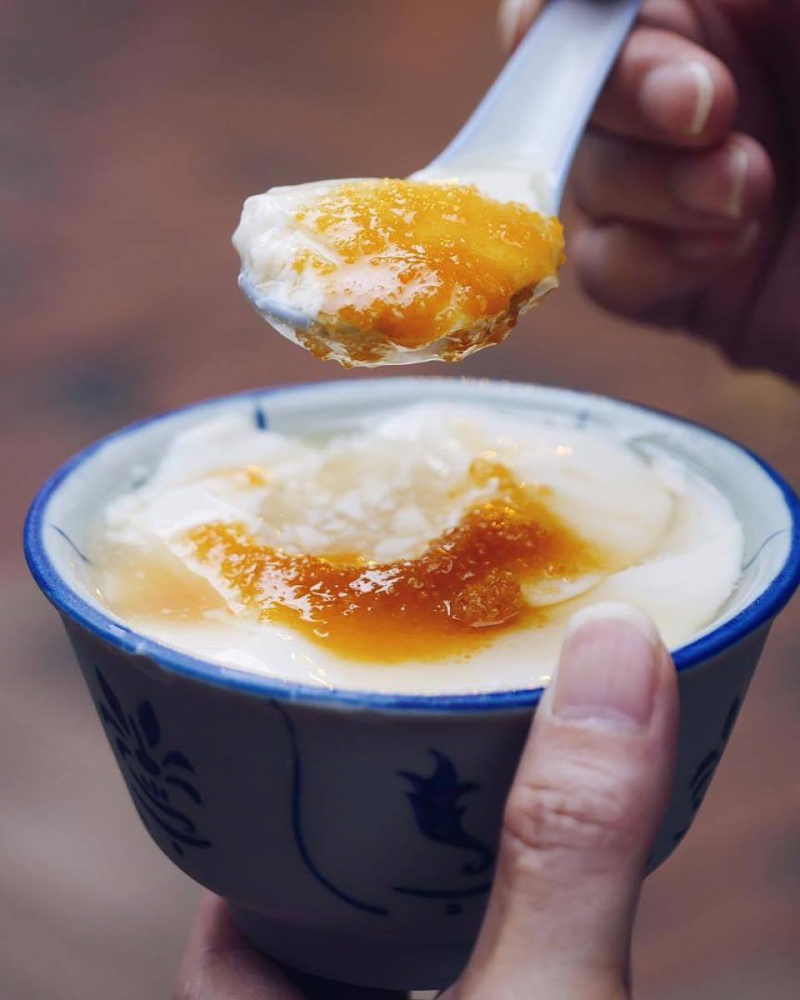
Screenshot of https://www.localiiz.com/post/food-drink-best-tofu-puddings-hong-kong Video by Taste Buds -
In the heart of Hong Kong's bustling streets, the Pineapple Bun is a star. It's called 菠蘿包, or Bo Lo Bao. It’s got a secret: there’s no pineapple in it! The name comes from how it looks – the top is all crackly and golden, just like a pineapple's skin.
Making these buns is like making art. There's a soft, fluffy bread at the bottom. Then, on top, there’s a sweet crust. It’s made with sugar, eggs, flour, and a bit of lard. When they bake it, it gets all crisp and yummy. The top cracks into a pattern that reminds you of a pineapple.
These buns are sweet little things. The bread is just slightly sweet. But the top? It's like a sugar rush. And some places have their own take on it. They slice it open and pop a slice of butter inside. When that butter melts, it's like the bun has turned into a buttery delight. Pair it with a strong cup of milk tea, and you've got a breakfast that’ll make you smile.
You can’t walk far in Hong Kong without seeing Pineapple Buns. They're in the old bakeries where the shelves are wood and history hangs in the air. They're in the modern cafes, too. Old-timers might share stories about enjoying these buns back in their younger days. And now, kids and grown-ups, everyone loves them.
Visiting Hong Kong? You've got to try a Pineapple Bun. It's like taking a bite of the city's story, its traditions, and its everyday life. And as Hong Kong keeps changing, these buns stay loved. They're a sweet piece of the city that never gets old.Key Takeaways:
- Origin: A staple in Hong Kong bakeries, named for its appearance, not its ingredients.
- Flavor Profile: Sweet, with a crunchy top and soft bread beneath.
- Ingredients: Dough made from basic bread ingredients with a topping of sugar, eggs, flour, and lard.
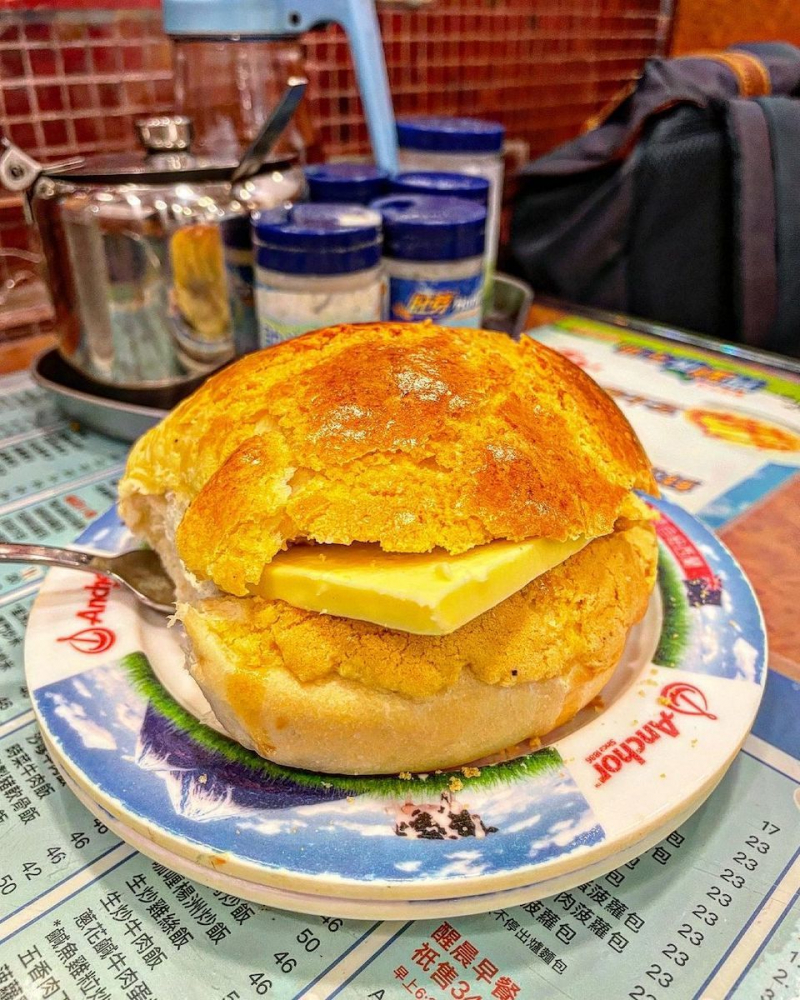
Screenshot of https://www.localiiz.com/post/food-drink-best-pineapple-buns-hong-kong Video by Lemon Films 檸檬職人探索頻道 -
Siu Mai, or 燒賣, is a simple yet delicious bite-sized snack that's big on flavor in Hong Kong. The food have made the leap from temple offerings to a street food loved by everyone. It’s a piece of Hong Kong’s soul, wrapped up in dough.
The making of Siu Mai is like putting on a little show. Picture this: ground pork and maybe some shrimp, seasoned with things like soy sauce, sesame oil, and a splash of Shaoxing wine. It’s about creating layers of flavor. Some chefs toss in bits of mushroom or water chestnuts for a surprise crunch.
Now, the magic happens when they wrap it up. They take a piece of yellow dough, thin and delicate, and it gets folded around the filling. But the top stays open – like a little window to what’s inside.
Take a bite, and what happens? There’s a burst of tastes. You've got the juicy filling, a little bit savory, a little bit sea-sweet from the shrimp. The dough is tender and just the right kind of chewy. And that flavor – it’s deep, rich, and keeps you coming back for more. That's the umami talking, the kind of taste that fills your mouth and warms you up inside.
Stroll through the markets of Hong Kong, and the smell of steamed Siu Mai fills the air. There's a rhythm to it, vendors steaming and selling, people eating and enjoying. Morning or night, Siu Mai is on the menu.
If you're in Hong Kong and you’re looking to try Siu Mai, you've got choices. There are old spots where the recipe hasn’t changed for ages. And then, there are the new twists, little tweaks here and there. It’s Hong Kong’s heart, one dumpling at a time.Key Takeaways:
- Origin: A temple offering in ancient China, now a daily delight in Hong Kong.
- Flavor Profile: Umami-rich with a hint of the sea, encased in a soft wrapper.
- Ingredients: Ground pork, shrimp, soy sauce, sesame oil, and Shaoxing wine, with occasional additions like mushrooms or water chestnuts.
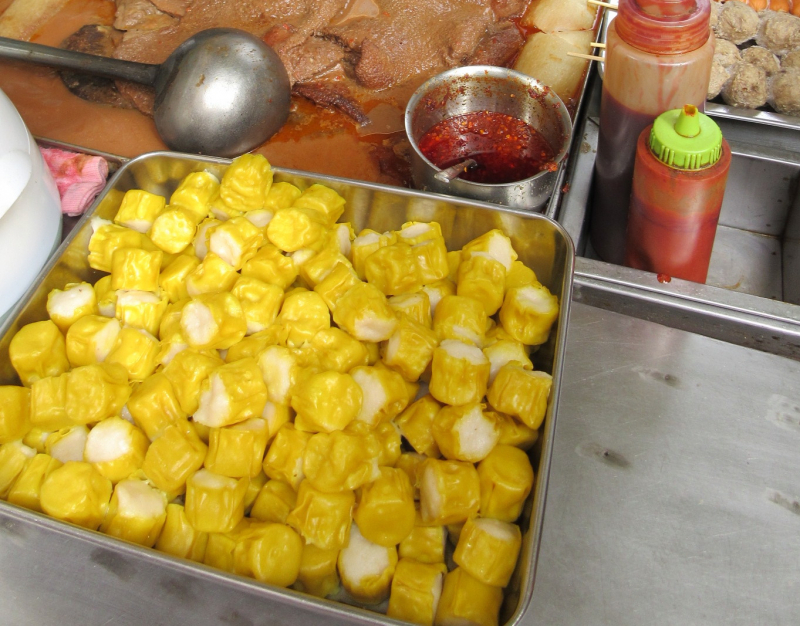
Screenshot of https://learning.hku.hk/ccch9051/group-11/items/show/20 Video by Goldthread -
In Hong Kong, if you ask someone about street food, they'll surely mention Rice Noodle Rolls, or Cheung Fun (腸粉). These rolls are like edible silk. It is wrapped around tasty treasures. They began as a simple dish made by villagers. Now, they're loved by everyone, everywhere in the city.
Here's how it goes: To make these rolls, you need a batter. It's mostly rice flour with water. Add a bit of tapioca or cornstarch, and that's it. This batter turns into a thin, smooth layer on a cloth over steam. It cooks into a see-through sheet. What goes inside? It could be shrimp, beef, or veggies. Roll it up, and you’ve got your Cheung Fun.
Taking a bite is an adventure. The outside is slippery and smooth. It's so soft, almost like jelly. Inside, you might find the snap of shrimp or the heartiness of beef. Every roll is different. Dip it in soy sauce, and it's perfect. The sauce is salty, but not too much. It just makes everything taste better.
You can find Cheung Fun anywhere in Hong Kong. Walk around in the morning, and you'll see lines of people waiting for a fresh roll. The smell? It’s gentle, but it makes your stomach growl. And in teahouses, these rolls go great with tea.
Want to try Cheung Fun? Hong Kong has lots of spots. Old-school places give you the classic taste. But don't miss out on the new spots. They're mixing things up, giving you new kinds of rolls to try.Key Takeaways:
- Origin: A simple village dish in Cantonese cuisine, now celebrated city-wide.
- Flavor Profile: Mild and silky rolls, with varied fillings, often dipped in light soy sauce.
- Ingredients: Rice flour, water, tapioca or cornstarch, and choice of fillings like shrimp, beef, or vegetables.
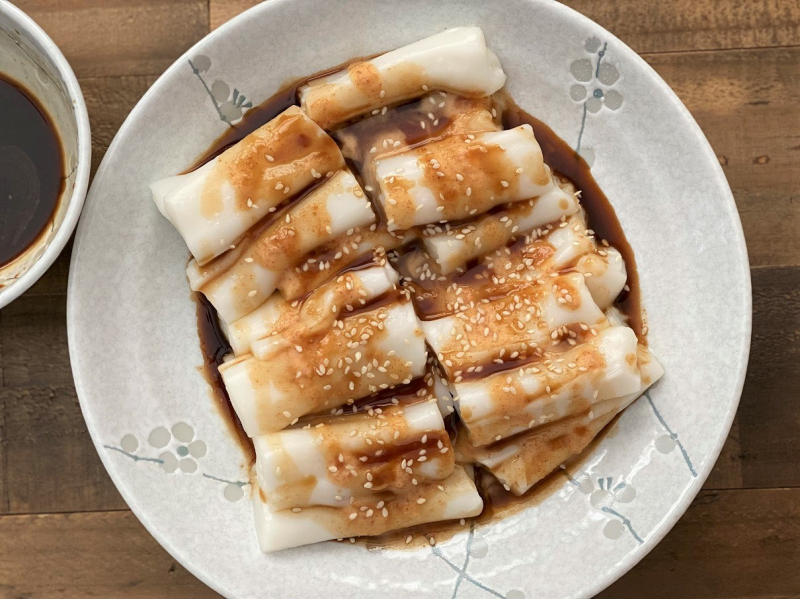
Screenshot of https://rackoflam.com/cheung-fun-steamed-rice-noodle-rolls/ Video by FoodyTrip 푸디트립 -
In Hong Kong's vibrant street food scene, Octopus Tentacles are a true standout. This snack has been a favorite for years. At night markets, you'll find octopus being grilled. The smell alone will make you want to try some.
Here's how they do it. First, they need fresh octopus tentacles. They clean them up and pick only the best parts. Then, they marinate them. They use garlic, chili, and soy sauce for a spicy kick. When they grill them, things get serious. The tentacles are cooked on high heat. This keeps them crispy on the outside and soft on the inside.
Now, let's talk taste. When you take a bite, it's like a flavor party. You get that charred taste first. Then, the saltiness of the sea comes through. And don't forget the spices. They sneak up on you, making everything more exciting.
Where should you eat these? The street stalls are the place to go. Family recipes also make these spots special. And when the sun goes down, these places are full of life. Everyone's eating, talking, and having a good time.
If you've never eaten Octopus Tentacles before, just go for it. Eat where the locals eat. You’ll get the real deal. It doesn't matter if the stall is tucked away or right in the middle of the action. These grilled treats are a big part of what makes Hong Kong's food so amazing.Key Takeaways:
- Origin: A popular street food delicacy in Hong Kong's night markets.
- Flavor Profile: Smoky and grilled with a blend of spices and a clear taste of the sea.
- Ingredients: Fresh squid tentacles, garlic, chili, soy sauce, and a mix of spices.
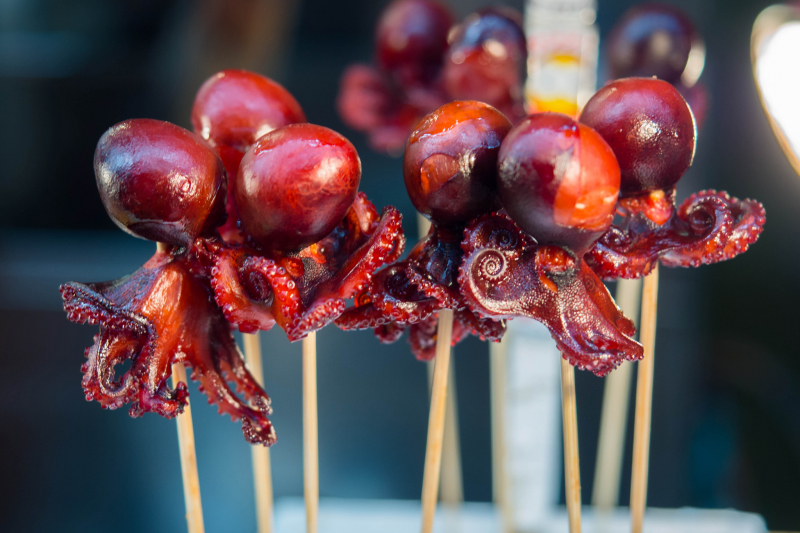
Screenshot of https://thatbestbite.com/2012/06/12/2303/ Video by settime2588 -
Egg Tarts are a sweet staple in Hong Kong. Their journey to Hong Kong's heart comes from the old British tradition of tea and pastries. Moreover, it mixed with the local flair for baking.
Let's talk about making Egg Tarts. It starts with the crust. Some bakers make it puff up in layers. Others bake it to be like a soft cookie. Each crust becomes a tiny bowl, holding the smooth egg mix. This mix is usually just eggs, sugar, and milk, sometimes with vanilla added.
Try one, and it's clear why they win hearts. The crust crunches, then you hit the soft custard. It's sweet, creamy, and gently tastes of egg. Fresh from the oven, Egg Tarts are bliss. They're warm and comforting, with a sugary note that lingers.
Through the years, Egg Tarts have changed. Now, bakers experiment. They mix in green tea for an East-meets-West flavor. Some tarts get a dash of chocolate, or even the luxury of bird's nest. Yet, the classic Egg Tart still has a strong following. It’s a reminder of Hong Kong's past.
Hunting for Egg Tarts in Hong Kong is a breeze. They pop up in both old-school bakeries and sleek coffee shops. You might find a long queue outside famous spots. But the real finds are off the main roads. The locals often know where the most delicious, under-the-radar Egg Tarts are hiding. And you might just discover the tastiest tarts tucked away in a quiet corner of the city.Key Takeaways:
- Origin: A blend of British tea-time customs and Cantonese baking expertise in colonial Hong Kong.
- Flavor Profile: Sweet and creamy custard paired with a crisp crust, creating a delightful contrast.
- Ingredients: Mainly eggs, sugar, and milk for the filling, with a pastry crust. Variations might have green tea, chocolate, or other flavors.
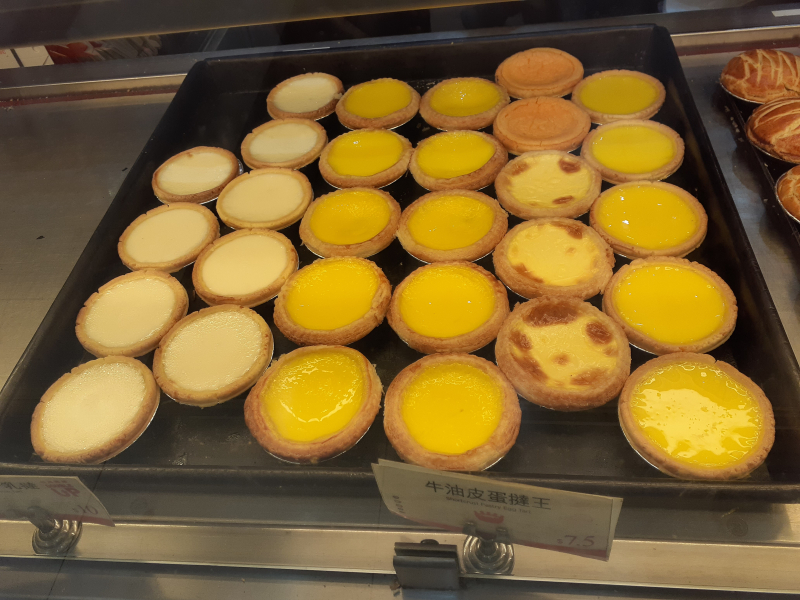
Screenshot of https://en.wikipedia.org/wiki/Egg_tart Video by Hong Kong 'Hoods -
Organs in a Pot, known in Hong Kong as "煲仔腰子", might seem like an adventurous choice to some. But here, it's a beloved dish. It's not only about the unique parts of the meal, but it also about the depth of flavor it offers.
The real stars of this dish are, of course, the organs, mainly kidney slices. The preparation is key. The organs are cleaned with care, cut up, and made ready for the pot. This careful prep makes sure the meal is both tasty and good to eat.
Now, the cooking part is special. A clay pot is the usual choice. It warms up slow and even, which is perfect for mixing the flavors well. The organs get a quick fry first. Then, they simmer in the pot with a tasty broth. The slow cooking brings everything together. In the end, you have organs that are soft and full of the savory broth's taste.
When you take your first spoonful, the dish tells its own story. The smell is hearty and welcoming. The flavor is rich. The organs are tender but still have some chew. They're loaded with the savory broth, making every bite delicious. This meal is like a warm hug on a chilly day.
This traditional dish has gotten some new twists. Chefs might add mushrooms for a woody taste or herbs for a fresh kick. But the heart of the dish stays true. It's all about celebrating the simple ingredients and the art of cooking them just right.
Looking for Organs in a Pot in Hong Kong? It's pretty simple to find. You'll see it in small street-side places and in fancy restaurants too. For a truly great dish, find a spot famous for its clay pot meals. There, tradition and cooking skill come together.Key Takeaways:
- Origin: Traditional Hong Kong dish, highlighting the importance of organ meats in Cantonese cuisine.
- Flavor Profile: Rich and savory, with tender organ slices absorbing the essence of the broth.
- Ingredients: Primarily kidneys, often accompanied by other organs, slow-cooked in a flavorful broth in a clay pot.
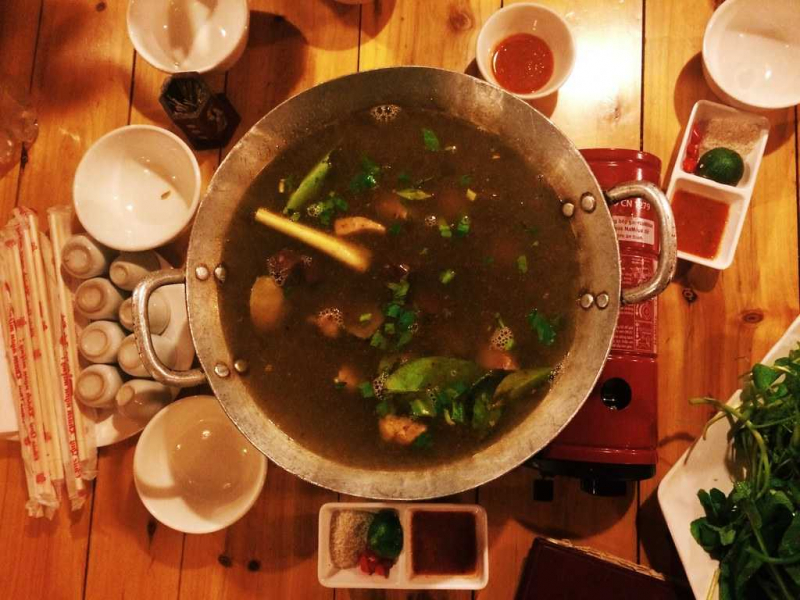
Screenshot of https://www.dreamstime.com/photos-images/hong-kong-street-food.html 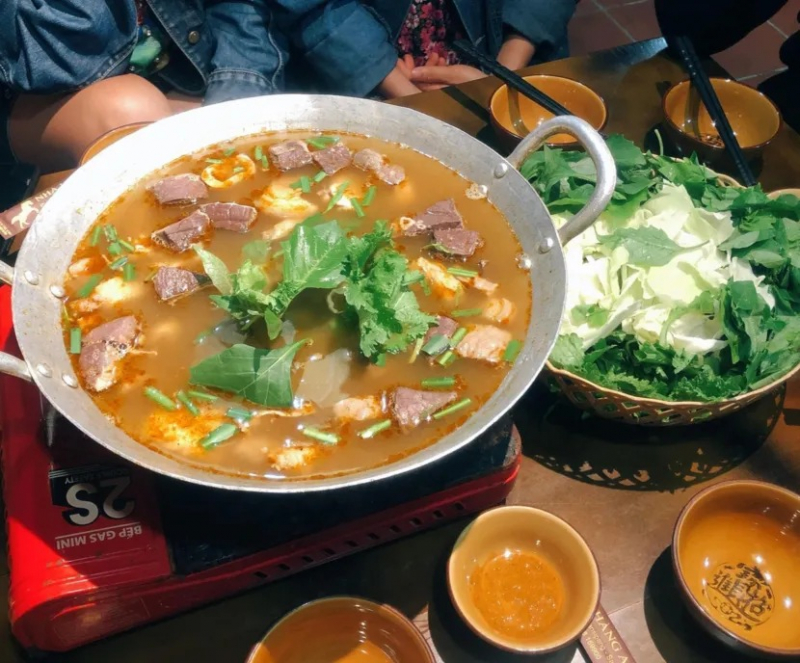
Screenshot of https://www.dreamstime.com/photos-images/hong-kong-street-food.html












